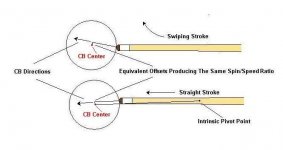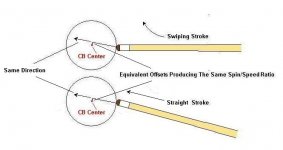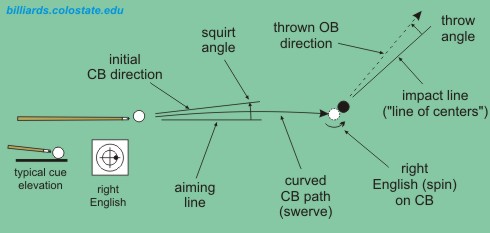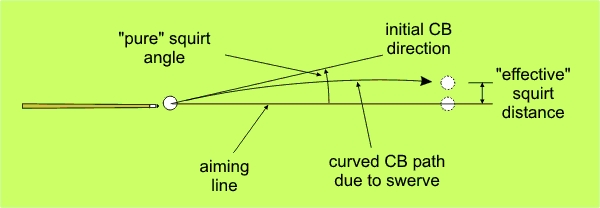It may be just as easy as pivoting when you've practiced it enough, but why would I want to spend the time on something that limits CB control?
Controlling swerve vs. controlling the CB means different choices for tip offset, butt elevation and speed. If they're different then there's obviously a tradeoff, and the trade is obviously more swerve control for less CB control. I think that's inescapable. So what's the benefit that's worth giving up some CB control?
pj <- assuming it's equally easy, which I'm not convinced of
chgo
Like I said before.
Speed should be roughly the same no matter what method you are using because using the same speed (or in non-Buddy Hall cases, the same 2 or 3 speeds) on every shot increases consistency by a great deal. So there is no tradeoff in speed.
You can use any tip offset you want provided you account for the curve with elevation, so there is no tradeoff there either.
I guess you could claim that butt elevation is a tradeoff, but really, its not like you are jacking up on every shot, just slightly inclined...and wait a minute, what am I saying...The tenet behind pivot techniques is that you must keep your butt as flat as possible so that you minimize curve. So logically, pivot methods would limit you MORE than parallel english because with parallel english you are able to adjusat your elevation freely.
Also 99% of cue ball control is simply a function of the speed you use, how the cue ball is rolling when it hits the object ball, and how much english you use. But again, ideally, your speed should be consistent on every shot. So by that measure, there really is nothing significant you can do with pivot methods that you can't do with parallel english EXCEPT for the aforementioned extemely hard shots and extremely close shots (actually you can do these things, it just becomes extremely difficult).
You could probably come up with a scenario where curving into the object ball creates an unfavorable angle off the object ball (even though the difference between the two is probably only a couple degrees at most), but really if you are shooting a shot that has such a small window to be successful, you are probably better off shooting a different shot.



